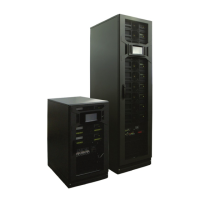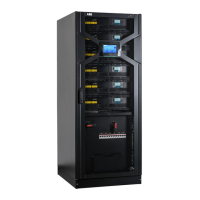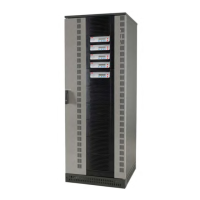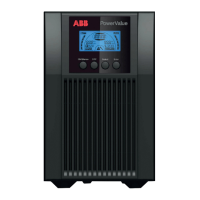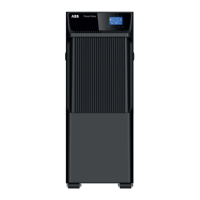Section-1
04-3006_S1_OPM_ABB_DPA_UPSCALE_RI_10-80kW_EN_150316.doc Page 50/52 ABB
Modifications reserved
1.6.1.2 Single Input Feed
To achieve correct Input Cabling see Drawing
See Section 2, chapter 2.1.2
For single input feed connect the mains input cable to UPS Terminal Block according to the following table:
For minimum recommended Input Cable Sections and Fuse Ratings See Section 2, chapter 2.1.2
Under the connection terminal of the UPS there is a cable-fixing rail to ensure that the cables have been fastened
properly.
1.6.1.3 Dual Input Feed
To achieve correct input cabling see Terminal Block in
See Section 2, chapter 2.1.2
NOTE: The UPS is supplied (as standard version) with facilities for a single cable feed (for rectifier and bypass).
If dual feed is required unscrew the terminal bridges between (L1,L2,L3, only)
For dual input feed connect the mains input cables to UPS Terminal according to following tables:
For minimum recommended Input Cable Sections and Fuse Ratings see Section 2, chapter 2.1.2
Under the connection terminal of the UPS there is a cable-fixing rail to ensure that the cables have been fastened
properly.
1.6.1.4 Preparation for the Output Cabling
Before you start connecting the loads, ensure that the sum of the indicated UPS-module rated powers (OUTPUT
POWER) on the nameplates (on the front side of the UPS-modules) is equal to or larger than the total load
requirements.
The output of the UPS must be fitted with circuit breakers or other kind of protection. These circuit breakers will be
connected between the loads and the UPS and will provide additional protection to the UPS in the event of
overloads and short circuits.
These circuit breakers will enable the protection of each load separately.
The size of the circuit breakers depends on the load rating of the load sockets.
The circuit breakers must comply with the prescribed IEC Standards. It is recommended to provide a separate
output distribution board for the load.

